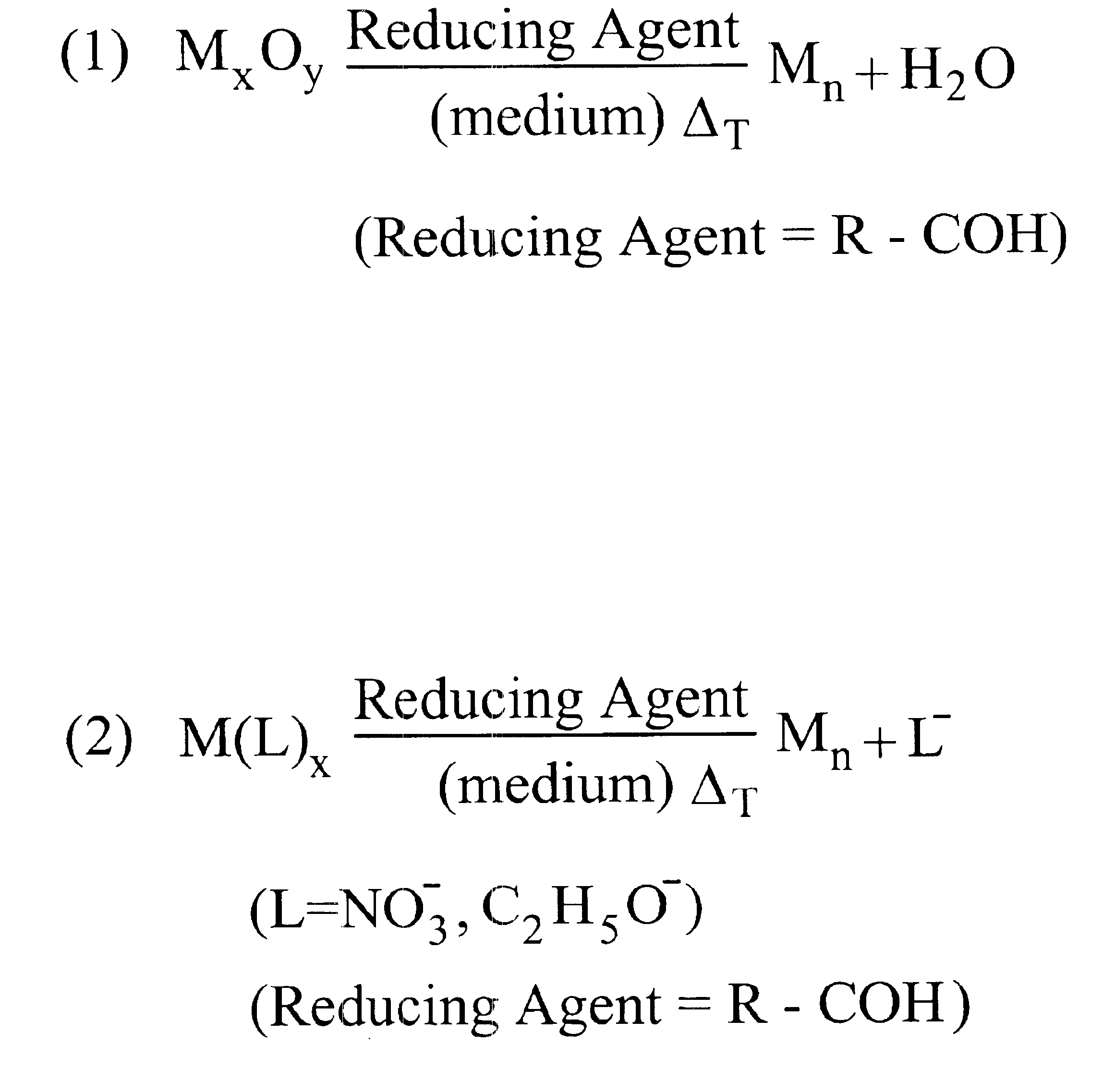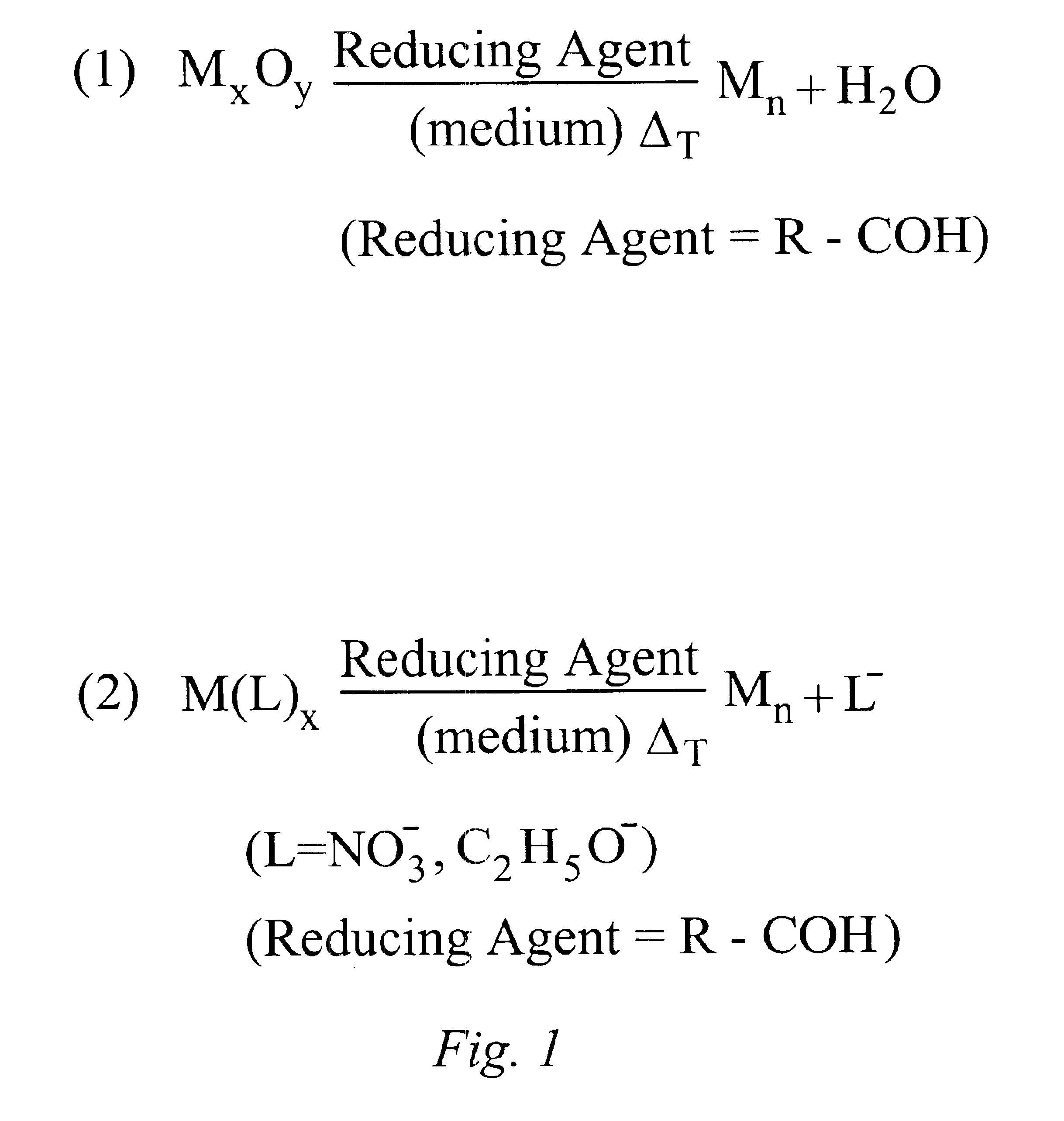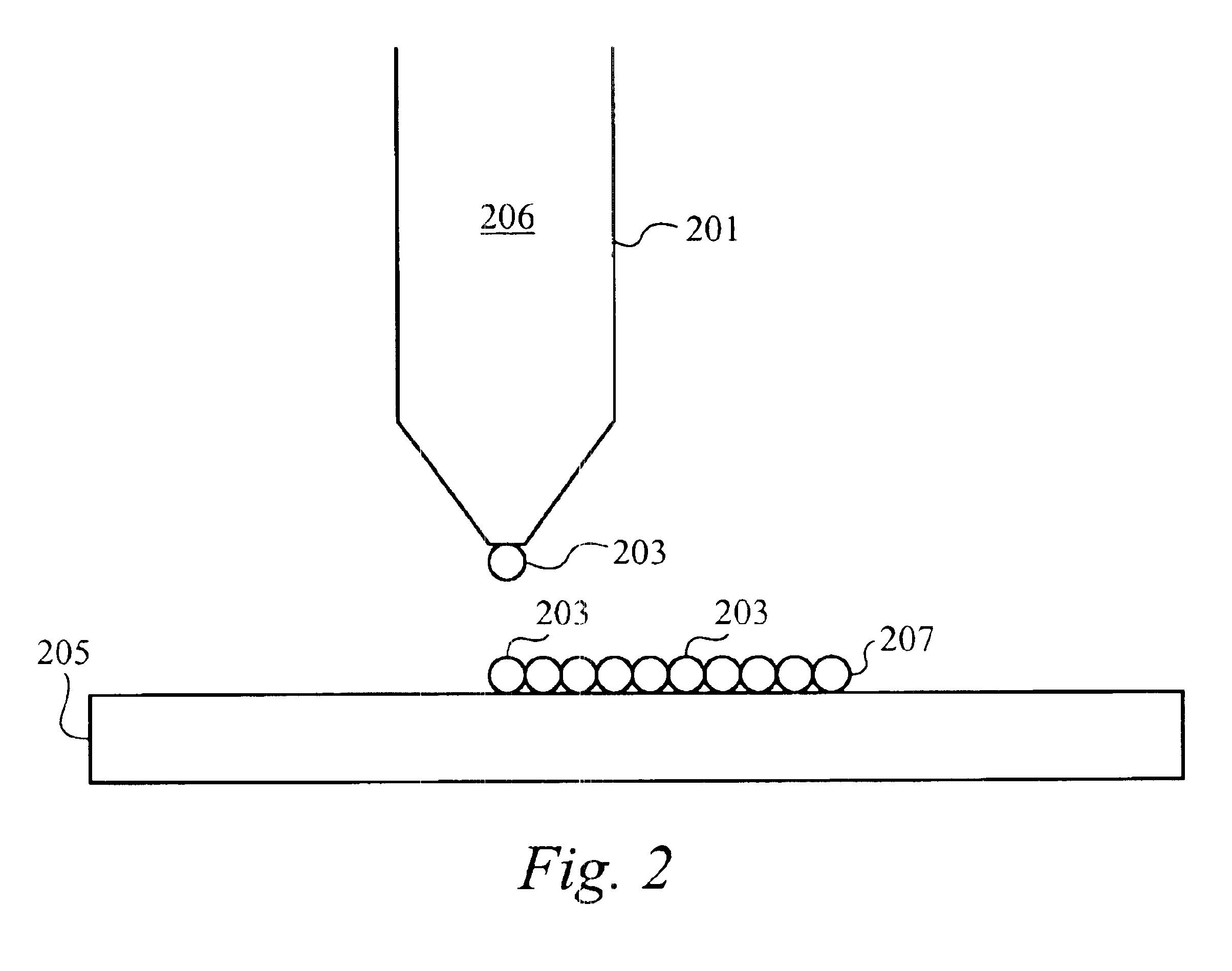Nanoparticle synthesis and the formation of inks therefrom
- Summary
- Abstract
- Description
- Claims
- Application Information
AI Technical Summary
Benefits of technology
Problems solved by technology
Method used
Image
Examples
examples
A. Synthesis of Metal Nanoparticles by Reduction of Metal Precursors
Example I
Synthesis
87 mg Ag2O (0.38 mmol) are dissolved in a mixture of 1.92 g 2-hexyldecanoic acid (7.5 mmol) and 1.51 g 1-dodecene at room temperature. 0.42 g oleic acid (1.5 mmol) is added. The mixture is stirred at room temperature under N2 flow for about 10 minutes. The reaction mixture is heated up to 150° C. and 0.33 ml dodecanal (1.5 mmol) are injected with a syringe into the reaction mixture. The reaction mixture is stirred at 150° C. under N2 for 90 minutes. The reaction is then rapidly cooled down to room temperature.
(Reaction volume=5 ml; [Ag]=0.15M; Ag / 2-hexyldecanoic acid=1:10; Ag / oleic acid=1:2; Ag / dodecanal=1:2).
Isolation of Particles
10 ml isopropanol are added to the reaction mixture to precipitate the Ag nanoparticles. The precipitate is separated from the supernatant by centrifuging. The precipitate is re-dissolved in 1 ml toluene. 2 ml isopropanol are then added to this solution. The so purified A...
example v
Synthesis
58 mg Ag2O (0.25 mmol) are dissolved in a mixture of 0.64 g 2-hexyldecanoic acid (5 mmol) and 3.17 g 1-dodecene and 0.08 ml octanol (0.5 mmol) at room temperature. The reaction mixture is stirred at 100° C. for 3 hours. The reaction is then rapidly cooled down to room temperature. (Reaction volume: 5 ml; [Ag]=0.1M; Ag / 2-hexyldecanoic acid=1:5; Ag / octanol=1:1).
Isolation of Particles
10 ml isopropanol are added to the reaction mixture to precipitate the Ag nanoparticles. The precipitate is separated from the supernatant by centrifuging. The precipitate is re-dissolved in 1 ml toluene. 2 ml isopropanol are then added to this solution. The so purified Ag nanoparticles are obtained as precipitate by centrifuging and then dried for 12 hours under N2 flow.
B. Synthesis of Metal Nanoparticles by Thermal Decomposition of Metal Precursors
Example I
Synthesis
58 mg Ag2O (0.25 mmol) are dissolved in a mixture of 1.28 g 2-hexyldecanoic acid (5 mmol) and 1.48 g 1-dodecene at room temperature....
example iii
Synthesis
130 mg Ag(ethylhexanoate) (0.50 mmol) in 3.26 g 1-dodecene and 1.30 g of 2-hexyl decanoic acid. The reaction is stirred at 200° C. for 11 min. The reaction is then rapidly cooled down to room temperature. (Reaction volume: 5 ml; [Ag]=0.1M; Ag / 2-hexyldecanoic acid=1:10).
Isolation of Particles
40 ml isopropanol are added to the reaction mixture to precipitate the Ag nanoparticles. The precipitate is separated from the supernatant by centrifuging. The precipitate is re-dissolved in 0.5 ml toluene. 4 ml isopropanol are added to this solution. The so purified Ag nanoparticles are obtained as precipitate by centrifuging and then dried for 12 hours under N2 flow. TEM=6.1 nm 0.95 std. Mean particle size.
PUM
| Property | Measurement | Unit |
|---|---|---|
| Diameter | aaaaa | aaaaa |
| Particle size distribution | aaaaa | aaaaa |
Abstract
Description
Claims
Application Information
 Login to View More
Login to View More - R&D
- Intellectual Property
- Life Sciences
- Materials
- Tech Scout
- Unparalleled Data Quality
- Higher Quality Content
- 60% Fewer Hallucinations
Browse by: Latest US Patents, China's latest patents, Technical Efficacy Thesaurus, Application Domain, Technology Topic, Popular Technical Reports.
© 2025 PatSnap. All rights reserved.Legal|Privacy policy|Modern Slavery Act Transparency Statement|Sitemap|About US| Contact US: help@patsnap.com



